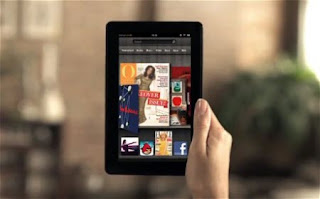Most would agree that having a job is better than not having a job in today’s economy. But therein lies the problem — you do the job because you have to, not because you want to. Job seekers not only face a selective job market with high unemployment, but with high underemployment.
Underemployment, despite its advantages over unemployment, is an issue not to be overlooked. It includes people working part-time who would like full-time employment, and people working at lower-level jobs than what they are qualified for, or earning less than they should be, due to the lack of available jobs. According to Gallup data, 18.1% of U.S. adults in the workforce are underemployed, while one in three young adults are underemployed (and twice as likely as older adults to be so).
The disadvantages of underemployment aren’t too different from being unemployed. People seem to lose motivation in their career path and are set back from advancing, potentially for a few years. An even bigger and distinct disadvantage is not having the time to look for employment because of current job obligations. The recession produced layoffs and a selective job market, leaving many qualified professionals settling for jobs that don’t utilize hard skills and their degree at large. Those baristas with MBAs, those waiters with biochemistry degrees, and those receptionists who went to nursing school are just as unable to find and land the job that’s a fit for them.
The underemployed have a different set of challenges — they are more set on building a career with relevant positions, but also need to find these positions without much digging. Fortunately, social networks, such as Facebook, LinkedIn and Twitter, make the job search much more direct and accessible. Below, you’ll find three ways to optimize your social networking if you’re one of the many underemployed.
Target Companies
The underemployed aren’t just looking for another position, they are looking for careers. Careers are built by companies, not just one job. Companies related to your degree and career interests will take people with common backgrounds and place them into roles that are challenging, and they’ll advance upward.
Make a list of target companies that offer roles on your projected career path. Follow them on Twitter and LinkedIn, and “like” their Facebook pages. Also look for “insiders,” or current employees, on social media to connect with. Your best bet is to reach out to someone at, or just above, your career level with a similar professional experience and background, and ask a few questions related to the job search and that person’s career.
Don’t simply ask for a job, but see if they can provide insight into the job market in your area, or advice on how they advanced their career, or even if they can connect you with relevant contacts within the company. Do this periodically (set a time about once a week) so that you can start finding better leads to jobs you want and can see yourself enjoying. Even if you’re offered entry-level work, despite ten years in the field or a master’s degree, consider what you can do to advance in the position, or better yet, ways you can meet people in the field more easily if you get your foot in the door.
Target Connections
In line with the tactic of reaching out to insiders, consider tapping into your own extended network. Your co-workers, friends, family and colleagues all serve as connections to jobs within your and their own networks. Remember that connections produce direct opportunities to jobs, whether it’s by a warm lead or through referrals.
When using your social network, be transparent about your job search progress and what you’re looking for through status updates, tweets or your bio. Don’t worry about coming off as desperate, unless you’re literally begging for someone to help you. Just simply state your current situation and what the next best (but relevant) situation you’re looking to gain. For example, “Emerging public relations practitioner looking for opportunities in non-profits and government agencies.” It’ll give everyone who is willing to help a better idea of what you’re fit for when they come across an employment opportunity.
Go in a New Direction
After being unemployed and then underemployed, some may feel their career path is just not working out for them. It may be saturated, or the person might not be in the right area with enough jobs, yet be unable to relocate. For some, changing fields is a last resort. For others, it can be a rewarding way to build a stable career path.
Social networking can ease this transition smoothly. First, meeting professionals in your new career path is easier than ever. You can find them usually occupying industry-related spaces, like Twitter chats or groups on LinkedIn and Facebook. Ask questions, participate in discussion and absorb all the advice you’re given. Additionally, these social networks are vast in sharing specific career resources — conferences, webinars, ebooks — anything and everything to craft your hard skills for your new career. Use social media to engage with your connections, and you’ll be able to learn what you need to do to lessen the impact of your minimal work experience.
Being unemployed or underemployed isn’t fun. It’s time consuming and frustrating, to say the least. But, making the most of the connections you have and fully utilizing your social networks can help you determine what direction you need to go in, and how to get yourself where you want to be.
What do you think? How have you used social media to find more relevant positions? Share your thoughts in the comments below. (Mashable.com)





































